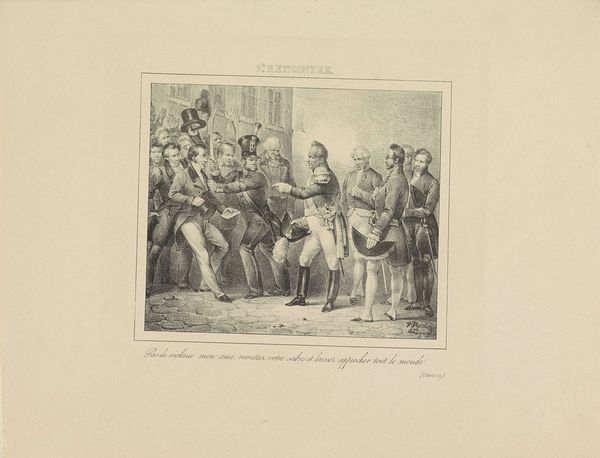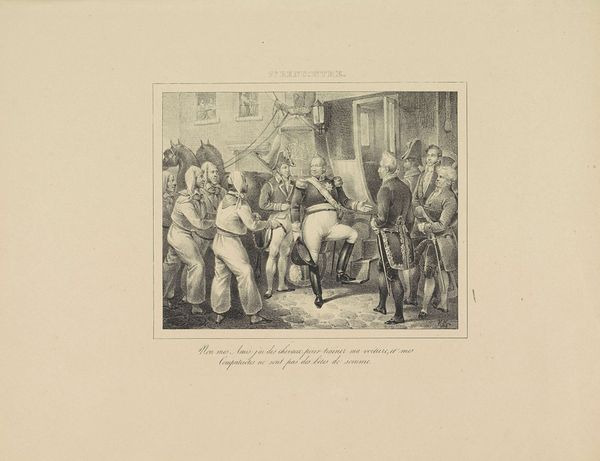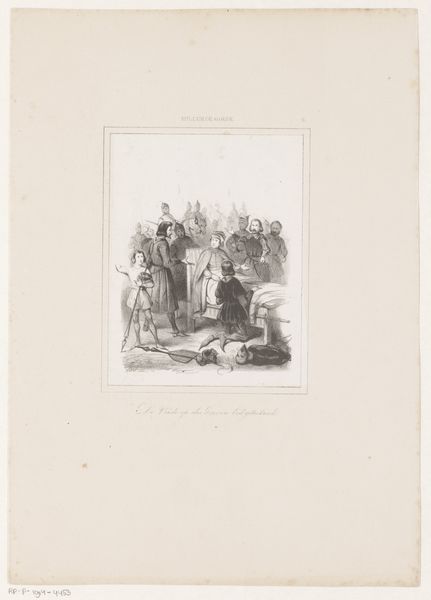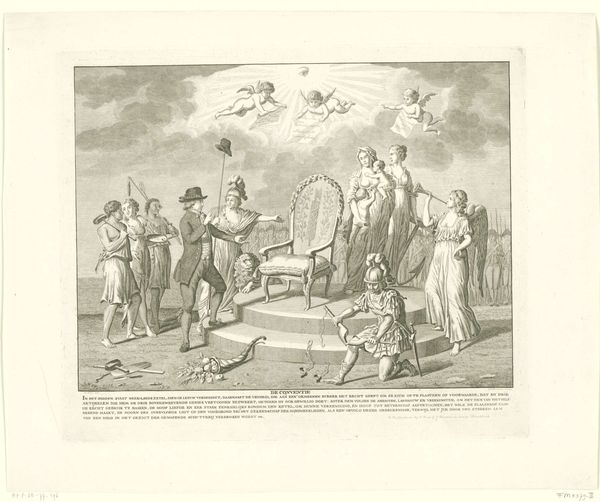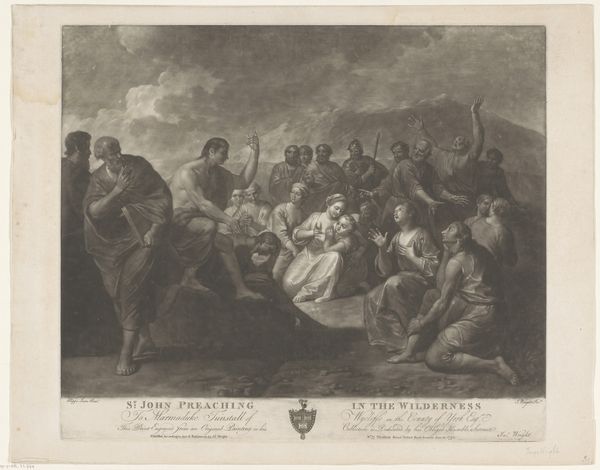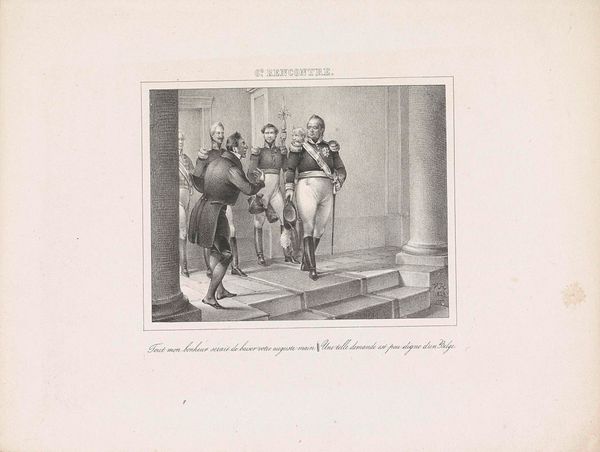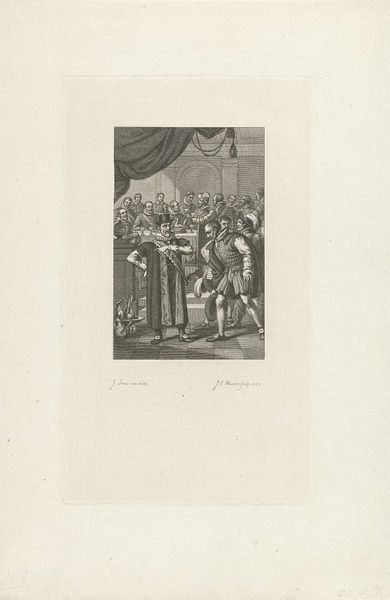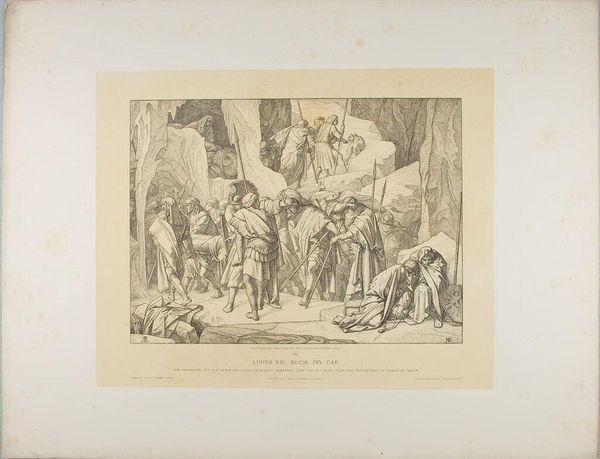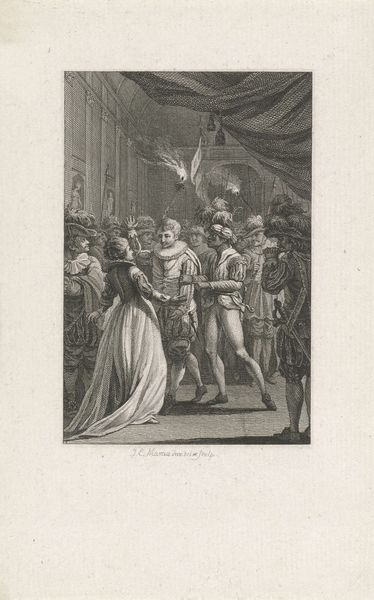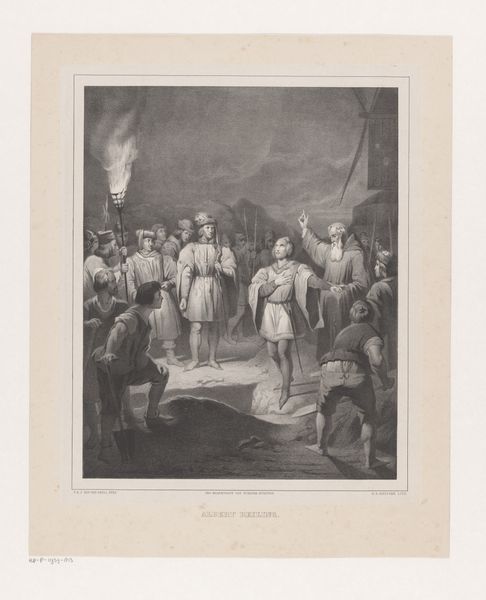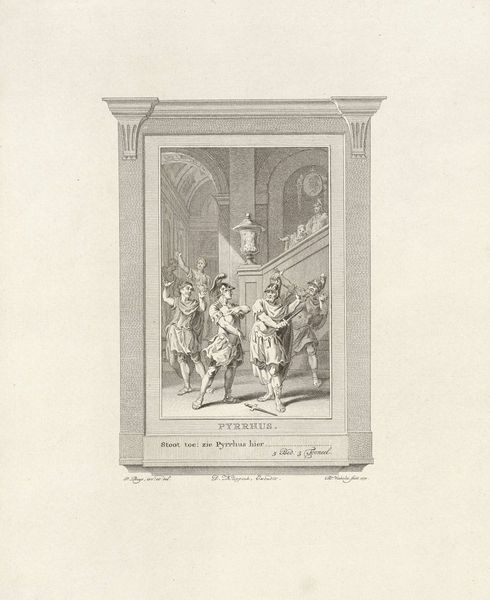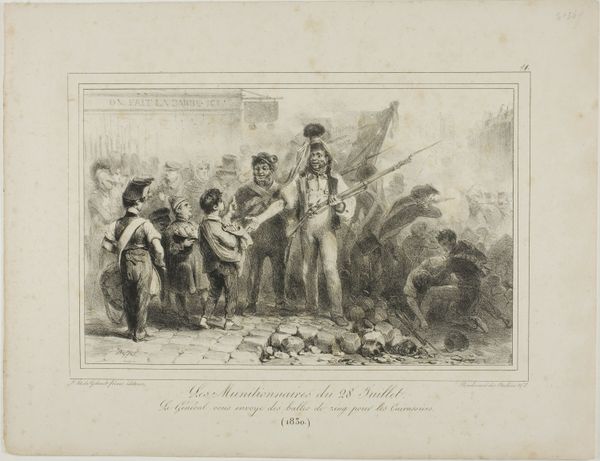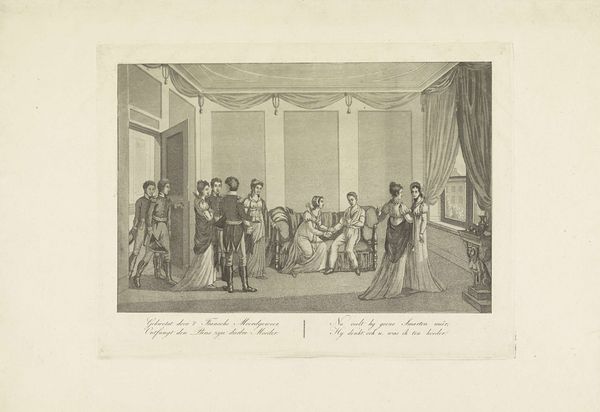
print, engraving
#
portrait
#
neoclacissism
# print
#
old engraving style
#
group-portraits
#
history-painting
#
engraving
Dimensions: height 235 mm, width 305 mm
Copyright: Rijks Museum: Open Domain
Editor: This is "Koning Willem I met een knielende vrouw," an engraving from 1829 by Jean-Louis Van Hemelryck. It strikes me as a rather theatrical scene, the woman kneeling before the King. What story do you see unfolding here? Curator: Indeed, the composition speaks volumes. Consider the kneeling woman—her posture is a potent symbol of supplication, but what is she asking for? Her placement before the King, surrounded by guards, creates a distinct visual power dynamic. Look at their faces. Do you think they display concern, pity, dismissal? It invites us to ponder themes of justice, mercy, and the role of the monarchy. Editor: I hadn't thought about their faces. The King appears relatively impassive, but you are right; there's a whole narrative embedded in the arrangement of figures and their expressions. Is the text under the print, "Bonne femme en se met a genoux devant Dieu et non devant des hommes, expliquer votre objet de votre demande" supposed to indicate some relationship with divinity, then? Curator: Precisely! The French inscription further complicates matters. The line encourages a relationship between her motivations for humility to a higher calling that she can only appeal to God rather than her fellow men in the line of guards surrounding the King. Van Hemelryck asks: Does the subject deserve justice only from above? Editor: So, the symbols of power are used ironically here. It's far more complex than I initially thought! I see the use of religion and governance as another layer into what might have been previously construed. Thanks! Curator: You’re very welcome. Sometimes, engravings hide so much in plain sight, waiting for us to look closely at how these symbols carry stories.
Comments
No comments
Be the first to comment and join the conversation on the ultimate creative platform.
